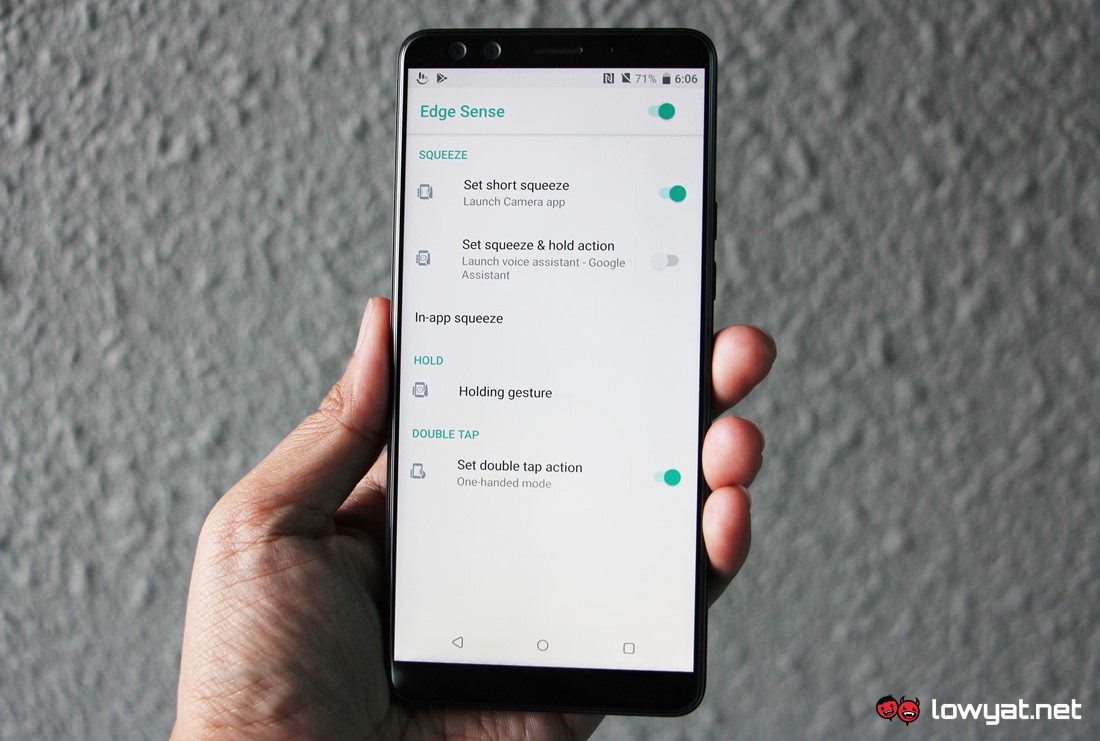HTC U12+ Hands On: A Beautifully Crafted Phone
In 2017, HTC has finally moved on from the metal-based design that the company has been using on its flagship phone since HTC One (M7) back in 2013 to a new design implementation called Liquid Surface which resulted in the sleek looking HTC U Ultra, U11, and U11+. With the newly announced U12+, it seems that the company has managed to push the design philosophy even further.
That being said, I have to say this first though: my brief encounter with the U12+ involves the variant with Translucent Blue body. The particular color option is not only the model’s signature colorway but it is also the only one of its kind for U12+ that provide a glimpse to some of the components within the phone.
So, in a way, the colorway might possess an unfair advantage to other color options for U12+ which include Ceramic Black and Flame Red that are likely to be quite good as well. While HTC has attempted translucent body before with U11+, the implementation on U12+ is slightly subtler although looks more pleasing to my eyes.
To me, the Translucent Blue body really defines U12+ although the glass back can be smudged rather easily by fingerprints but that comes with the territory. Aside from that, the phone overall design is also quite sleek while it still feels rather sturdy to hold.
Despite that though, the phone is not thin enough for HTC to justify its decision to not include the traditional audio jack into the device. As you might able to see, there is clearly some space for it on U12+ regardless on the top or bottom part of the device.
But then again, what do I know? I’m not a phone designer or an engineer. Nevertheless, it goes without saying that the absence of audio jack on U12+ might disappoint quite a number of users out there that might still prefer wired headphones with 3.5mm audio jack.
Another interesting thing that HTC has done with U12+ is using full touch sensitive buttons with haptic feedback for volume control and screen lock/power on the phone. In other words, these buttons are not the usual mechanical-based buttons that you can find on virtually all phones out there.
HTC has actually implemented textured screen lock/power button which helps users differentiate those buttons apart easily. Nevertheless, it does indeed feel rather odd using buttons that don’t move when being pressed, so potential owners out there might need some time to get used to those touch sensitive buttons.
Meanwhile, my encounter with the U12+ was rather too short to allow me to dive further into the phone. With the unit being a pre-release engineering sample, some of the features within the phone including Edge Sense 2.0 didn’t function well enough for me to provide any fair judgement on them as well.
The time constraints also didn’t allow me to properly test out U12+ camera which received quite a praise from DxOMark recently. That being said, I’m generally satisfied with its user interface since it doesn’t feel cluttered while featuring many settings that users might change frequently such as megapixels/aspect ratio, mode, camera types, HDR, flash, and timer within easy reach.
In terms of specifications on paper, the U12+ is pretty much the best device that HTC has to offer at the moment. We are looking at 6-inch Super LCD 6 Quad HD+ 18:9 display with HDR 10 support, Qualcomm Snapdragon 845, 6GB RAM, and up to 128GB internal storage. The phone is also designed to withstand water and dust according to IP68 standard.
Other than that, the phone also comes with 12MP f/1.75 UltraPixel 4 camera and 16MP f/2.6 telephoto camera on its back alongside 2x optical zoom capability, 10x digital zoom, and optical image stabilization system. On its front, there are two 8MP f/2.0 cameras as well.
The phone also comes with 3500mAh battery that supports Qualcomm Quick Charge 3.0 technology as standard. It is also interesting to note that U12+ also supports Quick Charge 4+ although users need to purchase their own QC4+ charger separately if they want to charge their U12+ at even faster rate.
As far as my first impressions are concerned, the HTC U12+ is quite solid in terms of aesthetic. At a time where gradient colors and color reflection effect seem to be the trend of the day when it comes to phone’s physical design, U12+’s Liquid Surface design might be able to help differentiate the phone from the rest of the market especially when it comes to the phone’s Translucent Blue signature colorway.
At the moment, HTC has yet to unveil the price of the phone in Malaysia but expect it to carry a premium price tag since U12+ is priced at USD 799 (about RM 3,184) for the 64GB model and USD 849 (about RM 3,383) for the higher-end 128GB model. More details regarding the phone should be out very soon though since U12+ is scheduled for release in Malaysia by the end of June 2018.
The post HTC U12+ Hands On: A Beautifully Crafted Phone appeared first on Lowyat.NET.
from Lowyat.NET https://ift.tt/2LMnJAW
Labels: Lowyat







0 Comments:
Post a Comment
Subscribe to Post Comments [Atom]
<< Home